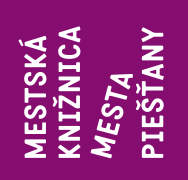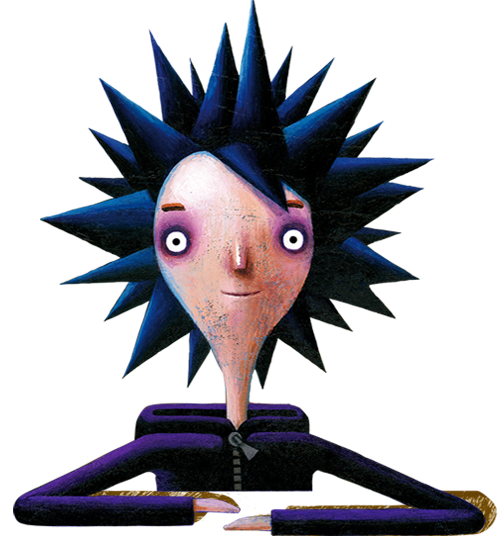The parks on both banks of the River Váh are significant natural phenomenon depicting appearance of Piešťany and life of its residents. The town is among those with the largest green area per capita in Slovakia, thanks to parks.
The Spa Park (with Slovak Health Spa Piešťany Inc. as its custodian) spreads on the left bank of the River Váh. From the town centre, it is accessible on foot via the Colonnade Bridge. It is possible to get to the Spa Park via the Krajinsky Bridge which is used mainly by vehicles. The Town Park is located on the right bank of river. Both parks form smaller „promontories“ of verdure areas open to public in the North-south direction and with the street greenery, they make up „the town lungs“.
The Piešťany parks are in area where originally the so called „hard meadow forest“ used to exist. It was composed from various kinds of woods like Lombardy poplar (Populus nigra), Field maple (Acer campestre), European hornbeam (Carpinus betulus), Small-leaved Elm (Ulmus minor), European Bird Cherry (Padus avium), Sessile oak (Quercus petraea), Narrow-leaved Ash (Fraxinus angustifolia) and others. In the undergrowth, the protected Bladder Nut (Staphylea pinnata), Burning bush (Euonymus verrucosus) or Cornelian cherry dogwood (Cornus mas) are frequent. The herbal undergrowth creates picturesque palette of mezzophile swampy species.
Making the Spa accessible to public had required draining off the water and recultivation of the area around River Váh. New vegetation conditions were created and the park architects had to reach for new composition of woods and shrubs. They have tried to make park interesting and attractive while they had to take into account climatic, micro climatic and soil conditions. Several Asian and American woods were introduced here during the parks establishment. Their range was gradually and purposely enlarged. The majority of introduced varieties are doing well in new environment. The fact they last even more than 150 years (not a rarity here), is testimonial to this claim. Such time span indicates the approximate age of both Piešťany parks.
More attention started to be paid to Spa Park especially after construction of two representative buildings on the River Váh left bank: Francis Spa (1898) which doesn’t exist anymore, and the best known Piešťany hotel - Thermia Palace Hotel (1912). It was needed, above all for Thermia Palace Hotel visitors and guests, to create green area for relaxation to have worthy supplement to a luxury hotel.
The Spa Park stretches from Krajinský Bridge up to the golf course in the Northern part of Spa Island. The by-pass of the River Váh forms park boundary in the East. Small park area behind Thermia Palace Hotel is significantly dominated by the Buttonbush planetree (Platanus x hybrida) /1/ with its respectful size and age (120 years). It is a cross-breed between Balkans and Mediterranean Oriental plane tree (Platanus orientalis) and the American sycamore (Platanus occidentalis), originally from Mississippi River Basin.
Slender Mature Lombardy poplar (Populus nigra f. italica) make up the park outline on the Spa Island which is directed toward the ruins of one of the highest placed castles in Slovakia - Temetín Castle. Next to lily pond, we can find a pair of Ginkgo biloba (Ginko biloba) /8/. It is the only kind of the Ginkgo genus older than 250 million years. This unique plant comes from Middle China where the last protected area of the original tree can be found. Ginkgo is of dioica species and has two slits leaves. Lately, it bears sweet, apricot-like fruits with pungent odour. It is a plant with highly curative, anti-cancer powers used for Alzheimer disease treatment but fore mostly for treatment of blood circulation in limbs and head. In 1945, after the atomic bomb was released on Japanese Hirošima, in the heavily damaged town plaza, only ginkgo survived undamaged - a phenomenon hard to be explained by any science. How ginkgo and its chemical properties work is still not properly researched.
We can find peculiar tree opposite to the ponds - Mediterranean redbud (Cercis siliquastrum) /9/. It originates from East Mediterranean and Balkans. Biblical Judas was to end his life on a branch of this tree. Extraordinary feature - cauliforia - was described right in this species. Tuft of violet, butterfly-like flowers which bloom in May, grow directly from its tree trunk.
In the parks, on both banks of the River Váh, warmth loving Southern catalpa (Catalpa bignonioides) /12/, originally from Carolina states (USA), is frequent. Tuft of orchid-like flowers bloom from middle of June, and in September long, bean-like pods are plentiful. Empress tree (Paulownia tomentosa) /13/ is rare wood in our parks. It bears the name of Anna Pavlovna, daughter to Russian tsar Pavel I. This species comes from China, it has light wood suitable for musical instruments and sandals manufacturing.
Trumpet creeper (Campsis radicans) /14/ is typical wood species found at Napoleon Baths colonnade, on its pergolas. This Trumpet creeper, is the most robust liana found in Slovakia. It is more than 100 years old. In the peak of summer, it blooms in gentianella-like orange flowers. It can easily withstand cutting and its vitality is worth admiration - its roots effortlessly penetrate a layer of asphalt. It originates from Eastern USA.
Next to Adam Trajan Well, beautiful specimen of Yellow poplar (Liriodendron tulipifera) /15/, originally from the area of Great Lakes, Northeast USA, can be found. Its splendid, yellow-green tulip-like flowers are scattered on its branches and bloom in the middle of May. Tough, leather-like leaves complement exotic feel of this tree.
Japanese cedar (Cryptomeria japonica) /16/, next to the ponds, is another rare specimen in Spa Park. This cedar brings us greetings from distant woods of China and Japan. To have it grown here, it represents the „last frontier“ of its occurrence and it complements the park exotic feel and its value.
Winter jasmine (Jasminum nudiflorum) /22/ flowers next to Villa Berlin, often in February, even before its leaves appear. The old Persian word „jasmine“ means „nice smell“. And in this case, the name really captures it all! In the neighbourhood of the House of Arts, we find remarkable Northern red oak (Quercus rubra), originally from Canada. In autumn, its leaves colour in purple-brown. Slowly, it makes its way into the wood communities.
Next to the Cultural and Social Centre, an exposition of Hamamelidales grows. It is Common witchhazel (Hamamelis virginiana) which blooms at the beginning of winter, and Japanese witchhazel (Hamamelis japonica) /19/ which flowers at the spring beginning. They both are interesting specimen with double-flower leaves.
Around the Balnea Esplanade Hotel, bizarre flowers of Bottlebrush buckeye (Aesculus parviflora) /20/ can be viewed in June. When we cross the River Váh via Colonnade Bridge, we find ourselves in Town Park. Immediately next to the bridge, before the Spa Chapel, we find the richest exposition of Goldenrain tree (Koelreuteria paniculata) /21/. This specimen comes from China, blooms in rich yellow broom-like flowers during the summer peak. After the flowers die off, decorative fruits, resembling little lanterns, form. They are edible, although sour.
North of the House of Arts, the rare Bald cypress (Taxodium distichum) /23/ can be found. This kind comes from the swamps of Southeast USA. It was brought to Europe as soon as in 1640. This part of park calls for renovation as some sensitive kinds of woods and shrubs have little chance to survive in dense growth.
North of the House of Arts, the rare Bald cypress (Taxodium distichum) /23/ can be found. This kind comes from the swamps of Southeast USA. It was brought to Europe as soon as in 1640. This part of park calls for renovation as some sensitive kinds of woods and shrubs have little chance to survive in dense growth.
Evergreen park with Port Orford cedar (Chamaecyparis lawsoniana)/4/ spreads before Thermia Palace Hotel. This species originates from North America and East Asia. This Port Orford cedar has very significant feature which makes it different from many kinds of trees - it has a drooping top branch. We can recognise the Port Orford cedar from other similar species like Red Cedar by its smallish ball fruits and scaled leaves with varied sliver drawings. The Eastern arborvitae (Thuja occidnetalis) and Westmont arborvitae (Thuja orientalis), growing together with Port Orford cedars , are distinctive with their cones.























